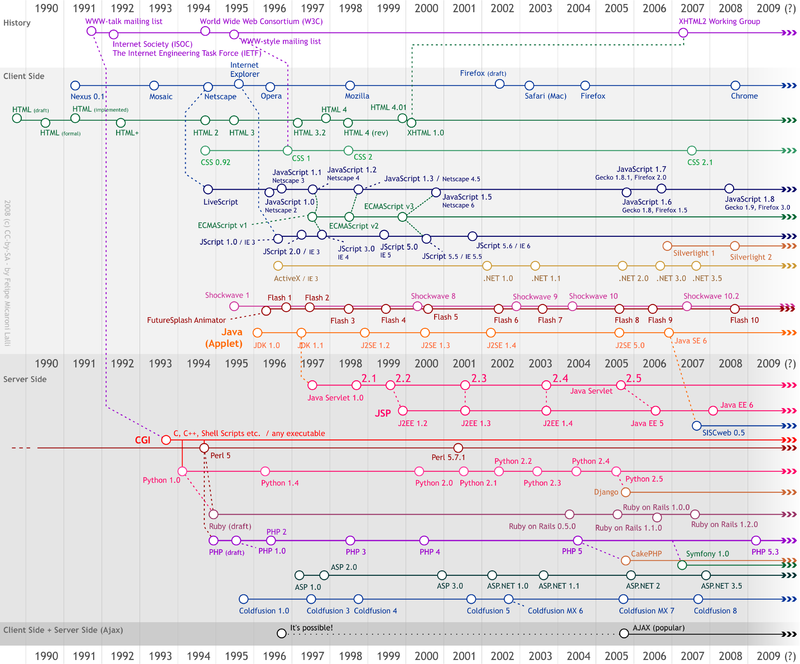Intro to computers and programming
- Computer Basics
- Introduction to Programming
- Introduction to Coding
- Scripting Basics
- Basics of a Programming Language
- Intermediate Programming
- Introduction to Object Oriented Programming
- Practical Uses of Scripting
- Algorithms and Data Structures
- Managing Code Project
- Real World Coding Examples
Introduction to Programming
What is Programming?

Development of a website for the Internet.
Programming is the process of creating a set of instructions that tell a computer how to perform a task. It's like creating a recipe: you need a list of ingredients (inputs) and a set of steps (instructions) to create a dish (output).
The Role of Programming in Technology
In the world of technology, programming plays a pivotal role. It is the backbone of all the software, apps, and websites that we use daily. Every action that a computer performs, from the simplest calculation to rendering complex 3D graphics, is done through a program written by a programmer.
Different Types of Programming
There are several types of programming, each with its own specific use cases:
-
System Programming: This involves writing code that directly interacts with the hardware, such as operating systems, device drivers, etc. It requires a deep understanding of how the computer hardware works.
-
Application Programming: This is probably what most people think of when they hear "programming". It involves creating software applications that perform specific tasks, like word processors, image editors, and video games.
-
Web Programming: This involves creating applications that run on the web. It can be further divided into front-end (what you see on the website) and back-end (server-side operations) programming.
-
Database Programming: This involves writing code to manage and manipulate databases. It requires knowledge of SQL (Structured Query Language) and understanding how to design and manage a database.
-
Mobile Programming: This involves creating applications for mobile devices. It requires knowledge of specific programming languages and platforms, like Java for Android and Swift for iOS.
The Importance of Programming in Problem-Solving
Programming is not just about writing code; it's about solving problems. When you program, you're given a problem (the task that the software needs to perform) and your job is to figure out a solution to that problem and implement it in code. This requires logical thinking and problem-solving skills.
In fact, many of the techniques used in programming, such as breaking down a problem into smaller parts, are useful in problem-solving in general. So, learning to program can also help improve your problem-solving skills in other areas.
In conclusion, programming is a fundamental skill in the digital age. Whether you're interested in creating your own software, understanding how your favorite apps work, or just want to improve your problem-solving skills, learning to program is a great place to start.